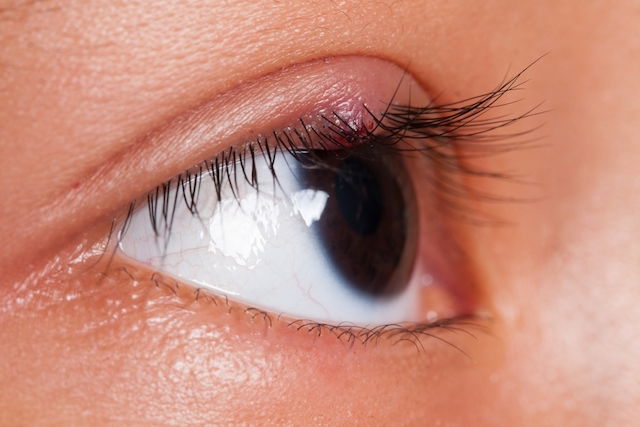To treat a stye, you can use warm compresses at least four times a day for 10 to 20 minutes. This can help to relieve inflammation and related stye symptoms. Styes that do not resolve within a week or continue to grow should be assessed by a doctor for a more targeted treatment. The doctor may prescribe opthalmic ointments, antibiotics or even a small procedure to drain the pus.
When treating a stye, you should avoid using eye make-up or contacts, as well as scratching the eyes to prevent further blocks and infection.

1. Stye ointments
Ointments for a stye generally include a combination of antibiotics (like oxytetracycline) and a corticosteroid, like prednisone. These types of ointments help to eliminate any type of infection that may be developing and promote natural healing from the body.
These ointments are generally applied 4 to 6 times per day after cleansing the eye with warm water, as prescribed by a doctor. More complicated cases of styes may require oral antibiotics to treat the infection, which may be more common in older adults.
2. Home remedies
A great home remedy for a stye to be completed in the first eight days involves warm compresses with chamomile to relieve inflammation, discomfort and pus accumulation. Using boric acid to treat styes is not advised, as it is a non-sterile substance that can easily worsen the infection.
To prepare a chamomile compress, place a chamomile tea sachet in 200 mL of boiling water and allow it to steep for 10 minutes. Then soak a clean gauze in the tea and apply on the stye for 5 minutes. You can repeat this three times per day.
Learn about other home remedies to help you get rid of a stye faster.
3. Surgery
In some cases, a stye may be caused by excessive pus accumulation, and in these cases, it is common for the doctor to recommend a small procedure to drain the pus. This is usually done in the clinic and involves puncturing the stye with a needle. It promotes infection resolution and reduces discomfort.
Depending on each person's tolerance level, this technique can be done under local anesthesia. It is common to complete this procedure without anesthesia, as the discomfort is comparable with popping a pimple.
Considerations during treatment
In addition to applying warm compresses or using prescription medications, you can also consider the following to speed-up recovery:
- Avoid squeezing the stye
- Avoid touching or scratching the stye
- Wash your hands before and after applying medication
- Do not use the same compress more than once
- Keep the eyes clean and free of crust
- Avoid using contact lenses
People who frequently use make-up should avoiding using it during treatment, as make-up can worsen the infection and increase discomfort.
Signs of improvement or worsening
Signs of improvement include reduced swelling and redness, as well as less pain or difficulty opening the eye.
The stye is worsening if you experience increased pain and swelling, as well as difficulty opening the eye. If the stye continues to have pus for more than 8 days, or if the infection spreads to other areas of the eye, you should see a doctor for assessment
